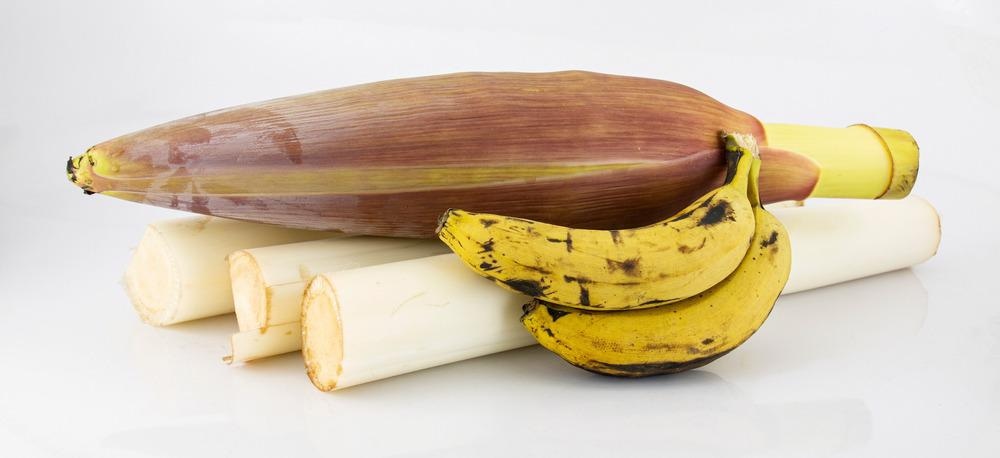In a recent study published in the journal Applied Acoustics, researchers from Brazil analyzed pseudostem fibers extracted from banana plants as a potential sound-absorbing material.

Study: Acoustic performance of the banana pseudostem fiber. Image Credit: PICJON/Shutterstock.com
The fibers were glued together using a natural adhesive without the use of any binders. The sound absorption coefficients were measured using an impedance tube and transfer function technique for a frequency range of 100-6300 Hz. The fibers demonstrated a coefficient of 0.89 at 6300 Hz, which was better than coconut fibers and similar to yucca fiber.
Background
Noise pollution is a growing concern in urban and metropolitan cities. It directly or indirectly, physically or psychologically, affects human beings and their activities. This requires well-planned construction designs and efficient acoustic materials.
Acoustic materials can be classified into soundproofing materials and sound-absorbing materials. The fundamental difference between both types of materials is that soundproofing materials reflect incoming acoustic waves, whereas sound-absorbing materials absorb acoustic waves and transform them into another form of energy, such as heat.
The most commonly used sound-absorbing materials are fiberglass and rockwool. However, these materials are known to deteriorate their surrounding environment during extraction. Thus, readily available natural fibrous materials have garnered a lot of attention as sound-absorbing materials.
There are three types of sound absorbers viz. porous absorbers, membrane absorbers, and resonance absorbers. In the case of porous absorbers, sound waves flowing into the cellular or fibrous structure gradually dampen and convert into heat. Membrane absorbers are non-porous and effective below the brass frequency range. They are placed in front of a rigid wall with a certain amount of air gap. The waves pass through the membrane towards the airgap but get trapped inside. Resonance absorbers are similar to membrane absorbers except that they are rigid and perforated.
Banana plants only flower once in their lifetime. After that, they are cut down to make space for new plants. For tropical regions like Brazil, banana plants are abundant and the fibers extracted from their pseudostem are being used in paper and textile industries. Additionally, their high watery body is a result of highly porous fibers that may absorb sound effectively.
About the Study
In this study, researchers fabricated three types of samples made up of banana pseudostem fibers to analyze their sound-absorbing potential. The first type of sample, sample A, consisted of only fibers of length 10 mm and 70 mm. Their sample thicknesses were 7 and 10 mm, and sample densities were 80 and 120 kg/m3, respectively. In B-type samples, fibers were glued together using natural cassava starch and water. In C-type samples, the glued samples obtained in samples B were sandwiched between two sheets made up of gypsum and water. The upper layer was perforated while the bottom layer was not.
More from AZoM: What are Photonic Coatings?
Subsequently, all three types of samples were tested in SW466 impedance tubes. The transfer function method was used to calculate the sound absorption coefficients and transmission loss coefficients. Several microphones were placed on both sides of the sample inside the tube with a sound source on one side. The analysis was performed in the frequency range of 100-6300 Hz.
Observations
All samples exhibited similar results with a maximum absorption coefficient of 0.20 up to the frequency of 1600 Hz. Above 2500 Hz, samples with higher density and higher thickness showed better sound absorption. However, with similar standards, glued samples exhibited a lower sound absorption coefficient than samples without glue.
This could be due to the reduction in the porous structure. C samples demonstrated variable coefficients at different frequency ranges without any direct correlation with the density or thickness of samples. However, C samples with equal gypsum layer thickness on either side exhibited better performance than samples with unequal gypsum layer thicknesses.
The unglued and glued samples with the highest densities and thicknesses i.e A7 and B7, respectively, demonstrated the highest sound absorption coefficient. Both samples demonstrated lower sound absorption than sisal fiber and fiberglass. However, they exhibited higher sound absorption than coconut fiber at frequencies above 4000 Hz. The C samples had the highest noise reduction coefficient.
Conclusions
In summary, the researchers of this study tested the sound absorption potential of banana pseudostem fiber. They prepared three types of samples with varying density and thickness viz. unglued, glued with natural cassava starch, and both unglued and glued samples sandwiched in between two gypsum sheets.
Out of two gypsum sheets, one was perforated and the other one was not perforated. The impedance tube and transfer function method revealed that the sandwiched sample with the highest sample density and thickness demonstrated the highest sound absorption coefficient. Thus, banana pseudostem fibers with high density and resonance absorber configuration i.e covered by a rigid perforated layer can be an efficient natural and eco-friendly noise reduction material.
Disclaimer: The views expressed here are those of the author expressed in their private capacity and do not necessarily represent the views of AZoM.com Limited T/A AZoNetwork the owner and operator of this website. This disclaimer forms part of the Terms and conditions of use of this website.
Source:
Mendes, C., Nunes, M., Acoustic performance of the banana pseudostem fiber, Applied Acoustics 191, 2022, 108657, https://www.sciencedirect.com/science/article/abs/pii/S0003682X22000317